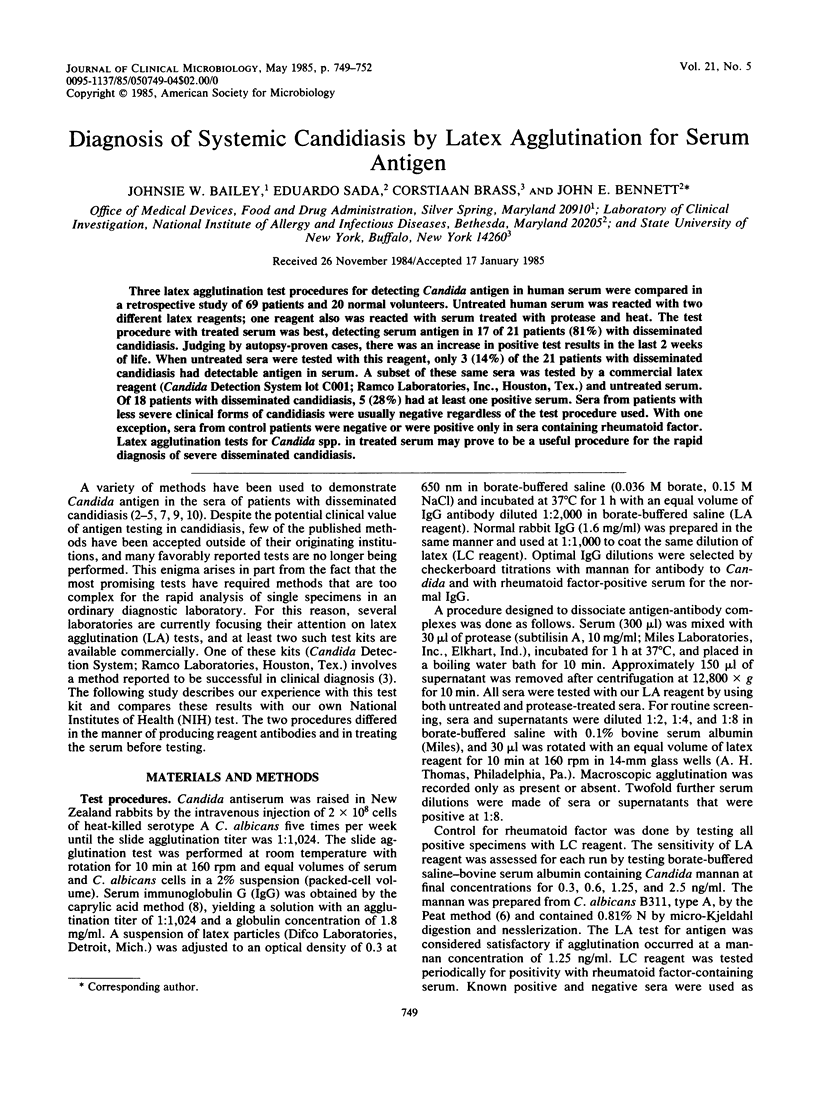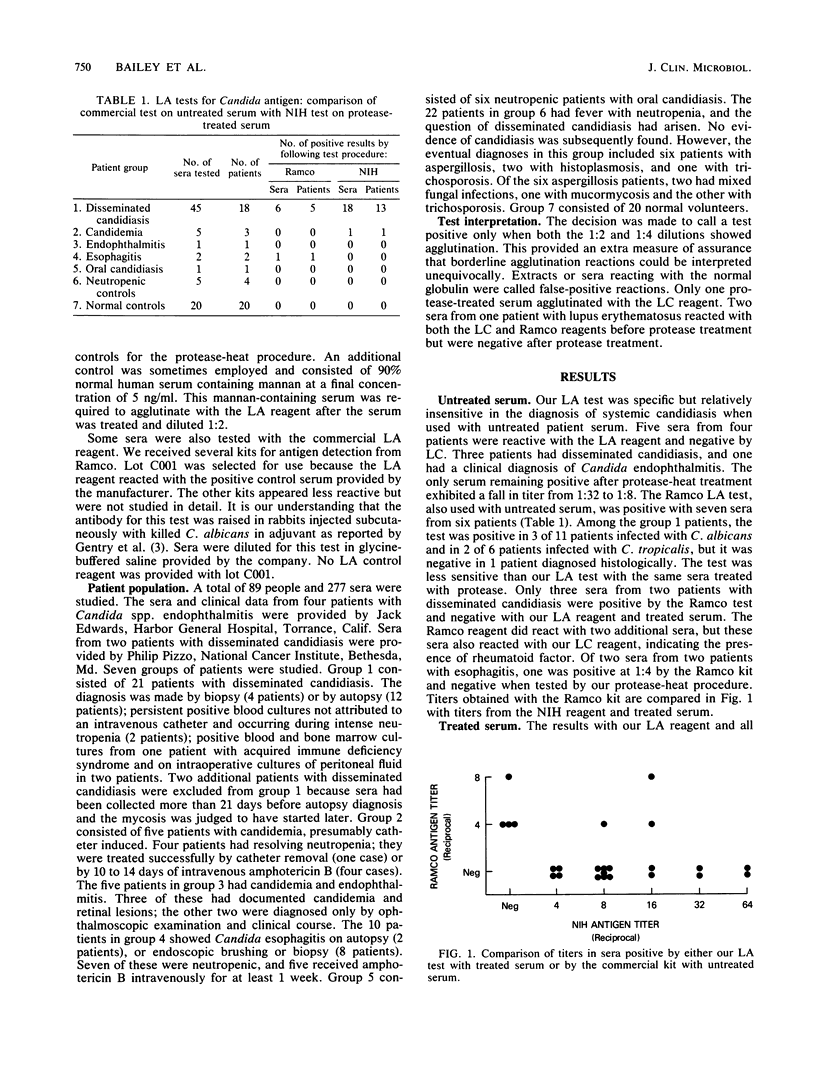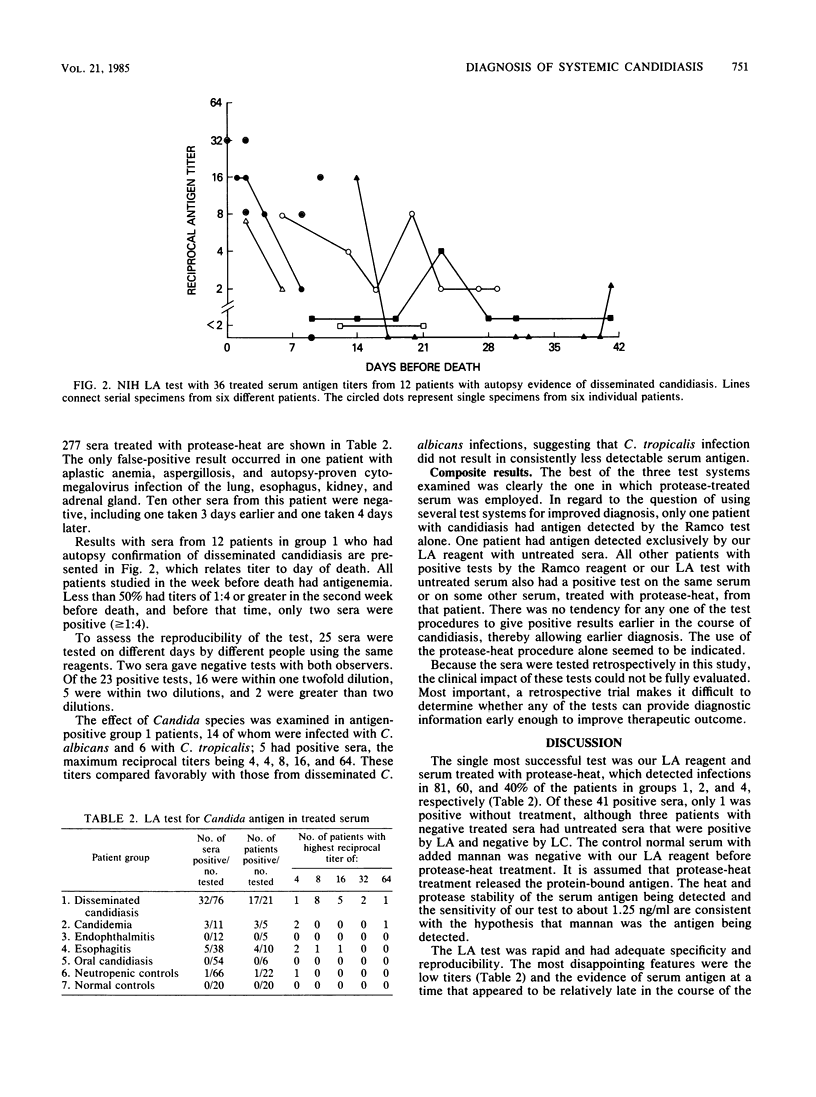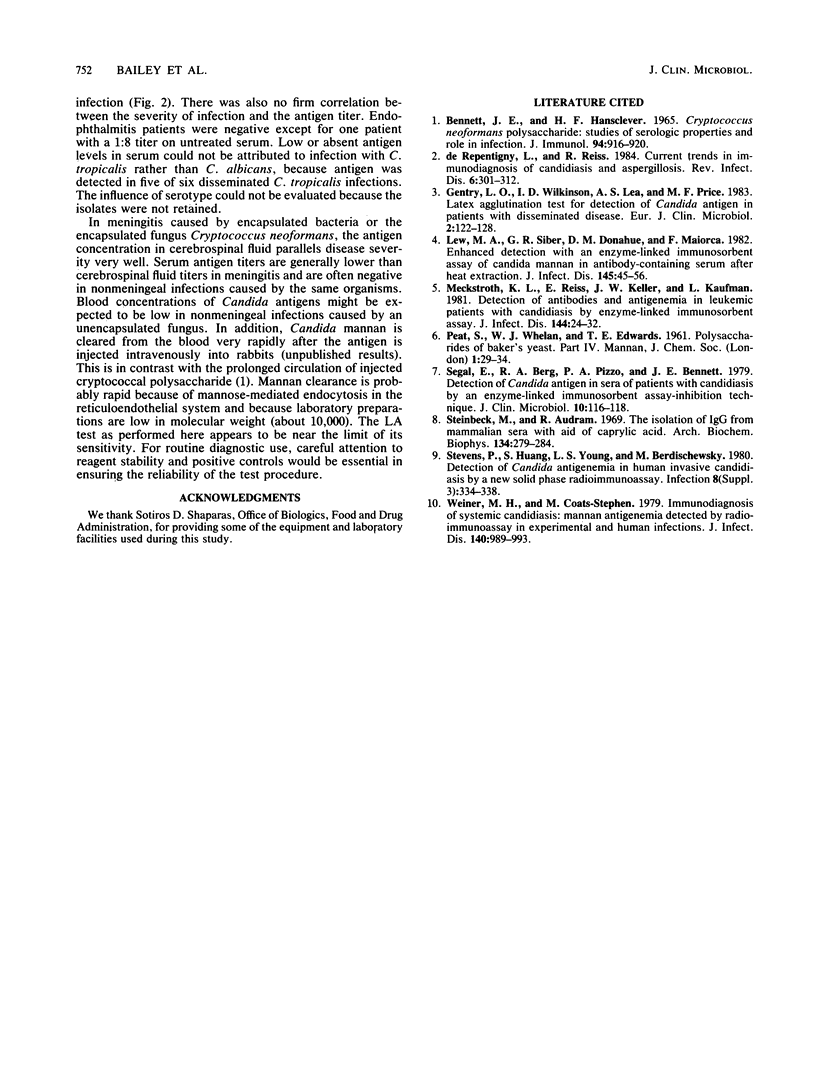Abstract
Three latex agglutination test procedures for detecting Candida antigen in human serum were compared in a retrospective study of 69 patients and 20 normal volunteers. Untreated human serum was reacted with two different latex reagents; one reagent also was reacted with serum treated with protease and heat. The test procedure with treated serum was best, detecting serum antigen in 17 of 21 patients (81%) with disseminated candidiasis. Judging by autopsy-proven cases, there was an increase in positive test results in the last 2 weeks of life. When untreated sera were tested with this reagent, only 3 (14%) of the 21 patients with disseminated candidiasis had detectable antigen in serum. A subset of these same sera was tested by a commercial latex reagent (Candida Detection System lot C001; Ramco Laboratories, Inc., Houston, Tex.) and untreated serum. Of 18 patients with disseminated candidiasis, 5 (28%) had at least one positive serum. Sera from patients with less severe clinical forms of candidiasis were usually negative regardless of the test procedure used. With one exception, sera from control patients were negative or were positive only in sera containing rheumatoid factor. Latex agglutination tests for Candida spp. in treated serum may prove to be a useful procedure for the rapid diagnosis of severe disseminated candidiasis.
Full text
PDF



Selected References
These references are in PubMed. This may not be the complete list of references from this article.
- BENNETT J. E., HASENCLEVER H. F. CRYPTOCOCCUS NEOFORMANS POLYSACCHARIDE: STUDIES OF SEROLOGIC PROPERTIES AND ROLE IN INFECTION. J Immunol. 1965 Jun;94:916–920. [PubMed] [Google Scholar]
- Gentry L. O., Wilkinson I. D., Lea A. S., Price M. F. Latex agglutination test for detection of Candida antigen in patients with disseminated disease. Eur J Clin Microbiol. 1983 Apr;2(2):122–128. doi: 10.1007/BF02001577. [DOI] [PubMed] [Google Scholar]
- Lew M. A., Siber G. R., Donahue D. M., Maiorca F. Enhanced detection with an enzyme-linked immunosorbent assay of candida mannan in antibody-containing serum after heat extraction. J Infect Dis. 1982 Jan;145(1):45–56. doi: 10.1093/infdis/145.1.45. [DOI] [PubMed] [Google Scholar]
- Meckstroth K. L., Reiss E., Keller J. W., Kaufman L. Detection of antibodies and antigenemia in leukemic patients with candidiasis by enzyme-linked immunosorbent assay. J Infect Dis. 1981 Jul;144(1):24–32. doi: 10.1093/infdis/144.1.24. [DOI] [PubMed] [Google Scholar]
- Segal E., Berg R. A., Pizzo P. A., Bennett J. E. Detection of Candida antigen in sera of patients with candidiasis by an enzyme-linked immunosorbent assay-inhibition technique. J Clin Microbiol. 1979 Jul;10(1):116–118. doi: 10.1128/jcm.10.1.116-118.1979. [DOI] [PMC free article] [PubMed] [Google Scholar]
- Steinbuch M., Audran R. The isolation of IgG from mammalian sera with the aid of caprylic acid. Arch Biochem Biophys. 1969 Nov;134(2):279–284. doi: 10.1016/0003-9861(69)90285-9. [DOI] [PubMed] [Google Scholar]
- Stevens P., Huang S., Young L. S., Berdischewsky M. Detection of candida antigenemia in human invasive candidiasis by a new solid phase radioimmunoassay. Infection. 1980;8 (Suppl 3):S–338. doi: 10.1007/BF01639607. [DOI] [PubMed] [Google Scholar]
- Weiner M. H., Coats-Stephen M. Immunodiagnosis of systemic candidiasis: mannan antigenemia detected by radioimmunoassay in experimental and human infections. J Infect Dis. 1979 Dec;140(6):989–993. doi: 10.1093/infdis/140.6.989. [DOI] [PubMed] [Google Scholar]
- de Repentigny L., Reiss E. Current trends in immunodiagnosis of candidiasis and aspergillosis. Rev Infect Dis. 1984 May-Jun;6(3):301–312. doi: 10.1093/clinids/6.3.301. [DOI] [PubMed] [Google Scholar]


